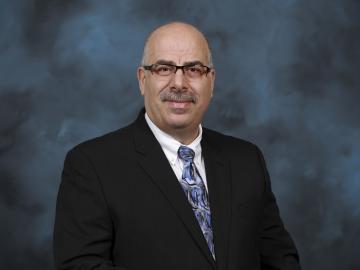Filter News
Area of Research
- (-) Biology and Environment (37)
- (-) Materials for Computing (18)
- (-) National Security (7)
- Advanced Manufacturing (7)
- Building Technologies (1)
- Clean Energy (69)
- Computational Biology (1)
- Computational Engineering (2)
- Computer Science (4)
- Electricity and Smart Grid (1)
- Fusion and Fission (14)
- Fusion Energy (1)
- Isotopes (12)
- Materials (15)
- Mathematics (1)
- Neutron Science (16)
- Nuclear Science and Technology (1)
- Quantum information Science (3)
- Sensors and Controls (1)
- Supercomputing (21)
- Transportation Systems (1)
News Topics
- 3-D Printing/Advanced Manufacturing (4)
- Artificial Intelligence (2)
- Big Data (1)
- Bioenergy (10)
- Biology (18)
- Biomedical (4)
- Biotechnology (4)
- Chemical Sciences (5)
- Clean Water (5)
- Climate Change (5)
- Composites (2)
- Computer Science (8)
- Coronavirus (2)
- Cybersecurity (3)
- Decarbonization (1)
- Energy Storage (2)
- Environment (24)
- Exascale Computing (1)
- Fusion (1)
- High-Performance Computing (5)
- Isotopes (1)
- Materials (9)
- Materials Science (10)
- Mercury (3)
- Microscopy (4)
- Nanotechnology (5)
- National Security (5)
- Neutron Science (5)
- Polymers (5)
- Quantum Computing (1)
- Quantum Science (3)
- Security (2)
- Summit (2)
- Sustainable Energy (10)
- Transportation (2)
Media Contacts

Moe Khaleel has been selected to lead the National Sciences Security Directorate, or NSSD, at the Department of Energy’s Oak Ridge National Laboratory.

Detecting the activity of CRISPR gene editing tools in organisms with the naked eye and an ultraviolet flashlight is now possible using technology developed at ORNL.

Biologist Larry York’s fascination with plant roots has spurred his research across four continents and inspired him to create accessible tools that enable others to explore the underground world.

An analysis by Oak Ridge National Laboratory shows that using less-profitable farmland to grow bioenergy crops such as switchgrass could fuel not only clean energy, but also gains in biodiversity.

A discovery by Oak Ridge National Laboratory researchers may aid the design of materials that better manage heat.

Oak Ridge National Laboratory researchers determined that designing polymers specifically with upcycling in mind could reduce future plastic waste considerably and facilitate a circular economy where the material is used repeatedly.

Using novel data sets and computing systems, researchers at ORNL are simulating how climate change affects the safety and security of the country.

In experiment after experiment, the synthetic radioisotope actinium-225 has shown promise for targeting and attacking certain types of cancer cells.

Ten scientists from the Department of Energy’s Oak Ridge National Laboratory are among the world’s most highly cited researchers, according to a bibliometric analysis conducted by the scientific publication analytics firm Clarivate.

A team of collaborators from ORNL, Google Inc., Snowflake Inc. and Ververica GmbH has tested a computing concept that could help speed up real-time processing of data that stream on mobile and other electronic devices.




